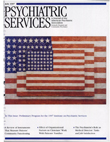Housing status among formerly homeless dually diagnosed adults
Abstract
OBJECTIVE: Residential outcomes of homeless adults with severe mental illness and a substance use disorder were studied over 18 months during which participants received integrated dual diagnosis services and housing supports based on a continuum model. METHODS: Interviews with 158 participants at baseline and at six-, 12-, and 18-month follow-ups assessed housing status, residential history, substance abuse and progress toward recovery, psychiatric symptoms, and quality of life. Complete data were available for 122 participants. If participants lived continuously in high-quality housing with no housing loss or nights of homelessness during the final six months of the study, they were classified as having stable housing. RESULTS: Of the 122 participants for whom complete data were available, 64 (52 percent) achieved stable housing. Most participants who achieved stable housing first entered staffed and supervised housing and then moved to independent arrangements by the end of the study. Stable housing during the final evaluation period was associated with lower substance use, greater progress toward substance abuse recovery, and higher quality of life. Final housing status was not predicted by baseline variables but was predicted by progress toward recovery during months 0 to 6 and 6 to 12 and by less severe drug use during months 6 to 12. Participants who abused no illicit drugs during months 6 to 12 were almost three times as likely to achieve stable housing as those who abused illicit drugs. CONCLUSIONS: Housing stability is strongly mediated by substance abuse and progress toward recovery. Nevertheless, when formerly homeless persons with dual diagnoses are provided integrated dual diagnosis treatment, they can gradually achieve stable housing.



